2021 is a crucial year for China's space odyssey as the country readies for its busiest launch schedule since its first satellite take-off more than half a century ago.
China's orbital launches are expected to exceed 40, more than any other year in the country's history.
One project in specific is drawing much attention – the construction of Tiangong, China's space station. It consists of a core module, Tianhe, and two experimental modules, Wentian and Mengtian.
Tianhe and the Long March-5B Y2 carrier rocket, which will send the central module into space, were transported to the launching area at Wenchang Spacecraft Launch Site in the southern province of Hainan on Friday.
More launches will follow, namely that of the cargo spacecraft Tianzhou-2 and the manned spaceship Shenzhou-12. The assembly of the space station is expected to be completed by the end of 2022.
According to the China Manned Space Engineering Office, the Shenzhou-12 mission is undergoing final assembly and testing at the launch site at Jiuquan Satellite Launch Center in north China's Inner Mongolia Autonomous Region. It is designed to take astronauts into space to help construct the space station.
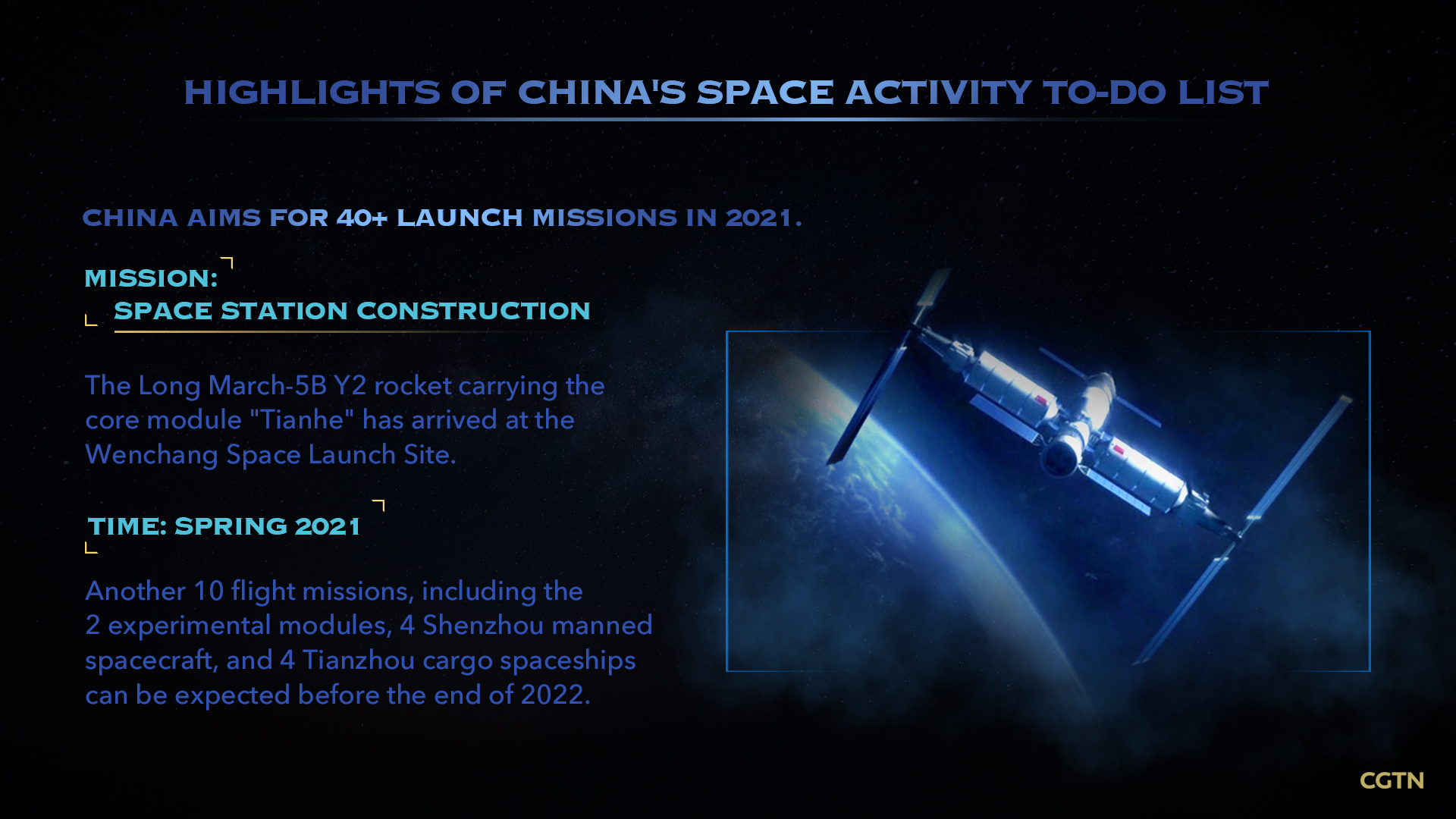
CGTN Infographic by Gao Hongmei
CGTN Infographic by Gao Hongmei
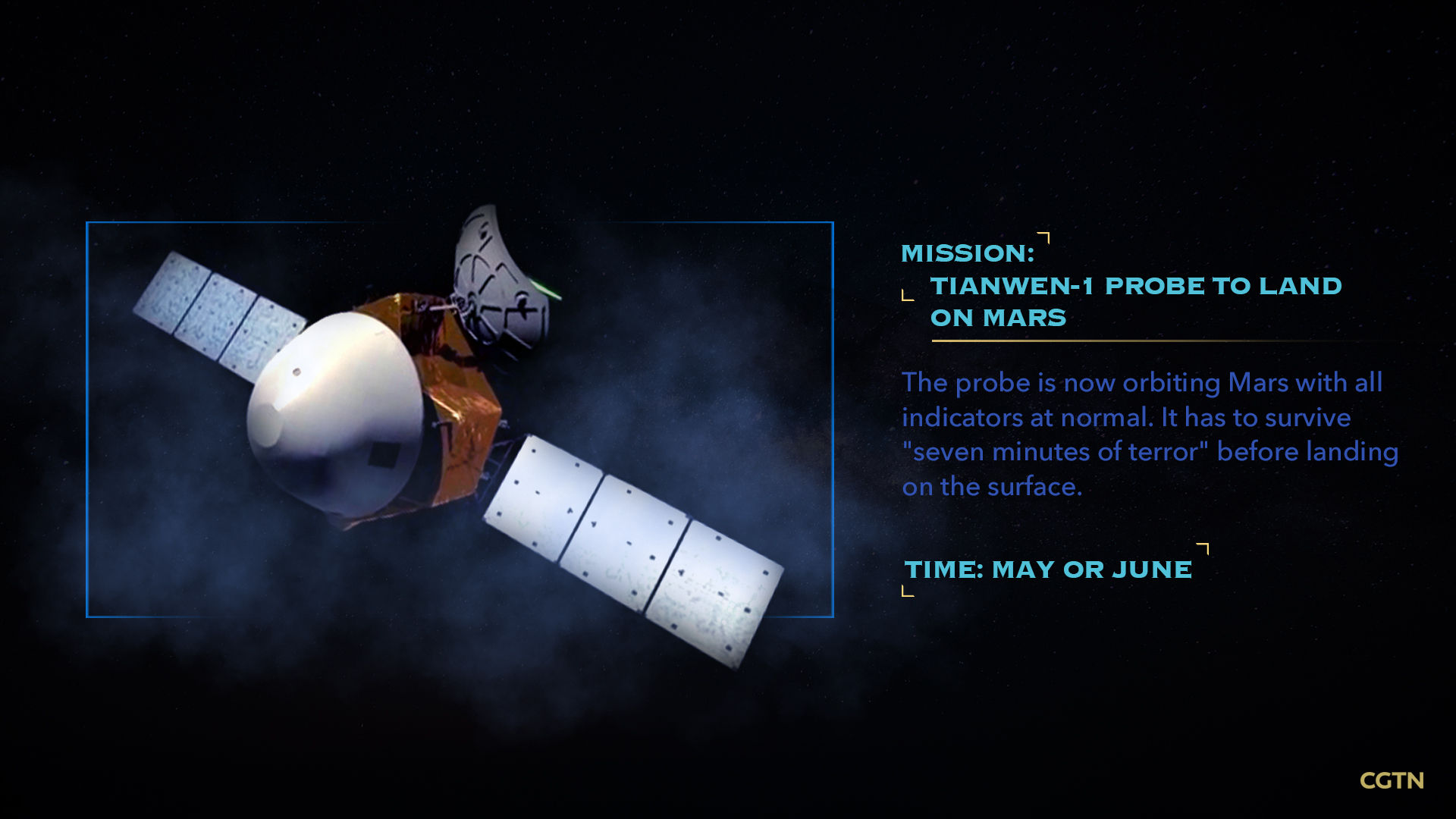
CGTN Infographic by Gao Hongmei
CGTN Infographic by Gao Hongmei
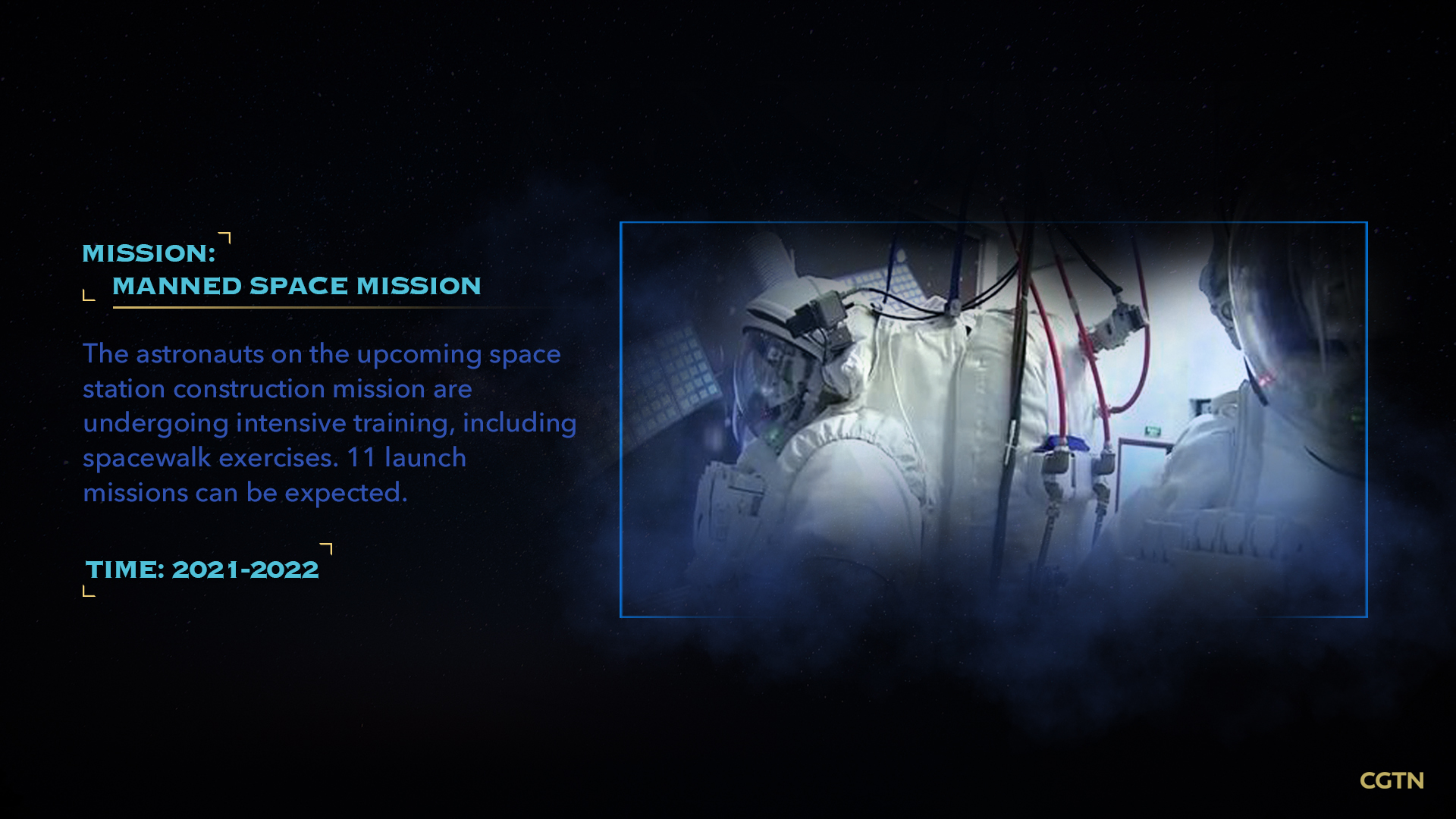
CGTN Infographic by Gao Hongmei
CGTN Infographic by Gao Hongmei
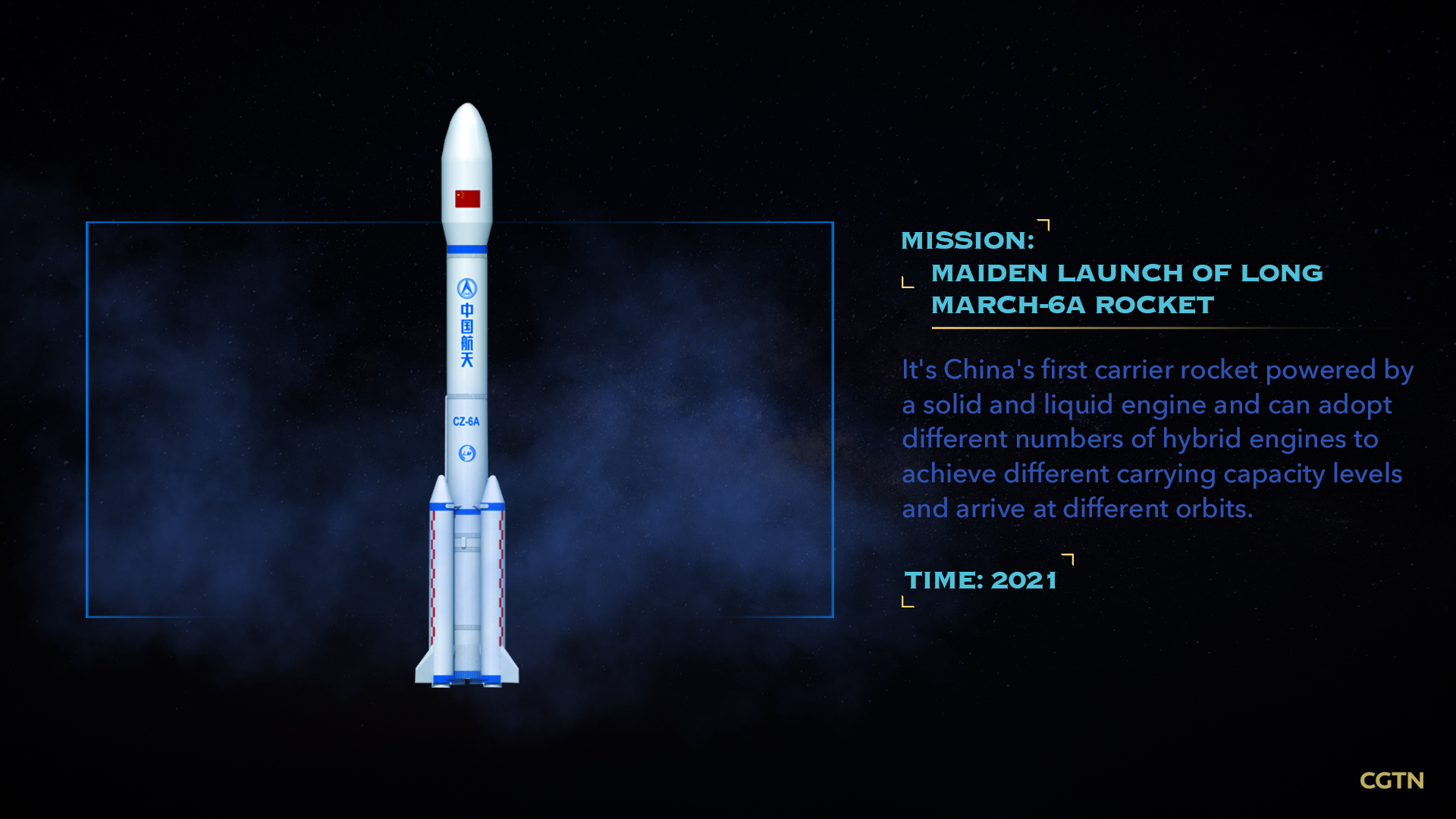
CGTN Infographic by Gao Hongmei
CGTN Infographic by Gao Hongmei
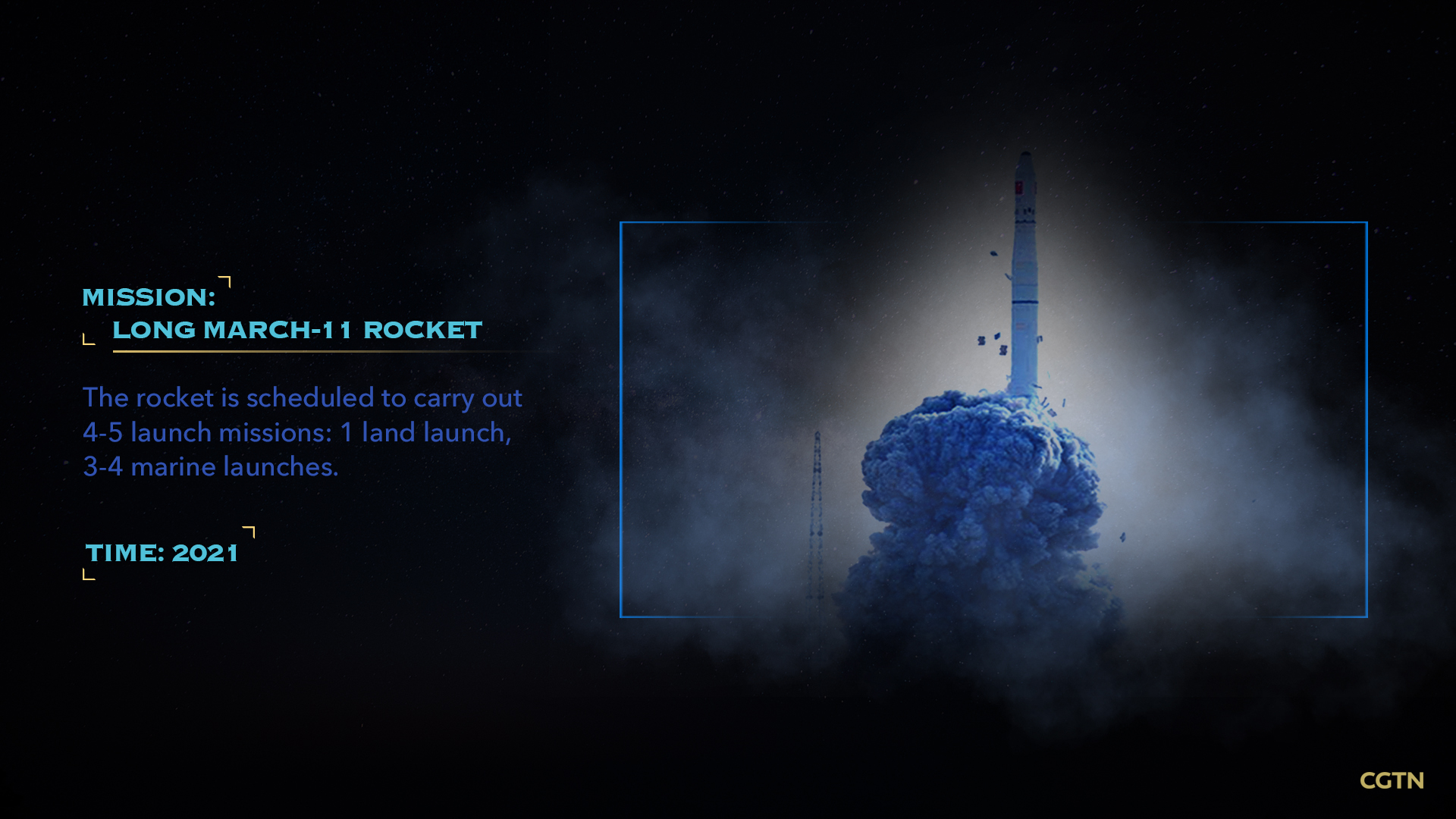
CGTN Infographic by Gao Hongmei
CGTN Infographic by Gao Hongmei
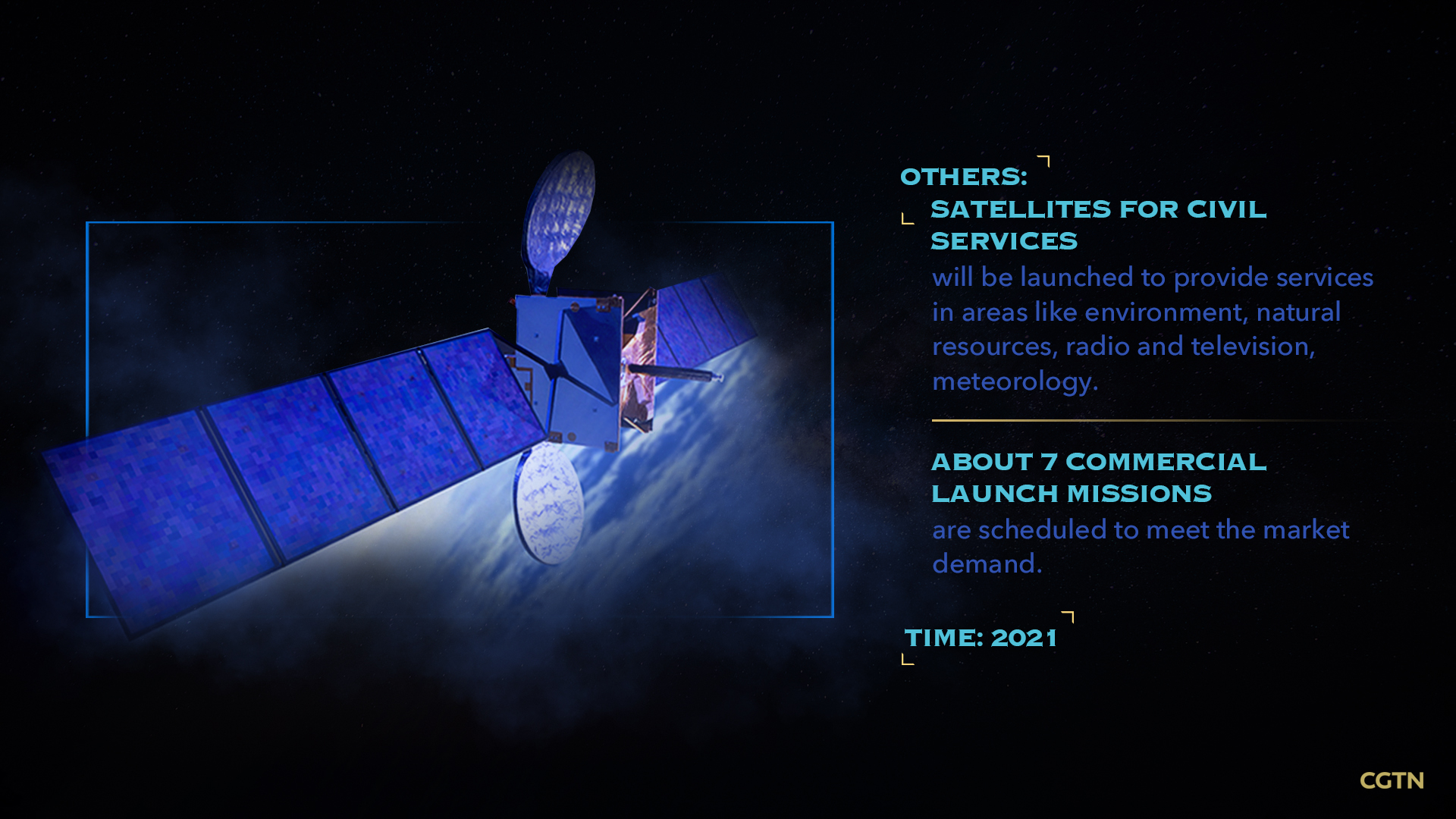
CGTN Infographic by Gao Hongmei
CGTN Infographic by Gao Hongmei
Once operational, Tiangong will be one of only two space stations in orbit, along with the International Space Station (ISS). But as the ISS will be retired in a decade, Tiangong could be the only space station available for scientists and researchers on Earth.
Another important project in the pipeline is China's Mars mission.
Tianwen-1, China's first spacecraft circling an extraterrestrial planet, is orbiting in a parking orbit and collecting data ahead of landing on the Red Planet between May and June. The mission's success would make China the second country after the U.S. to independently deploy a rover on the Martian surface.
The China National Space Administration (CNSA) on Saturday revealed the name of the Mars rover, Zhurong, coinciding with the National Space Day.
Two challenges await the Tianwen-1 mission: Finding a time window for the rover to enter the atmosphere of Mars, and releasing the craft on the planet's surface after the landing.
Liu Tongjie, deputy director of the Moon Exploration and Space Engineering Center of CNSA, told China News Service in an interview last October that China has planned four missions for planetary exploration in the next decade. Besides Tianwen-1, an asteroid probe mission is scheduled in 2024, a Mars sample return around 2030 and a Jupiter mission, also in 2030.
Mars is the hottest destination for global space explorations. In 2020, China, the United States and the United Arab Emirates all took the opportunity of the planet's proximity to Earth, a phenomenon known as "Mars opposition" that takes place about every two years, to launch their probes.
China is accelerating its development in space. Last year, it completed 39 launch missions consisting of 89 spacecraft, 34 of which were supported by Long March rockets.
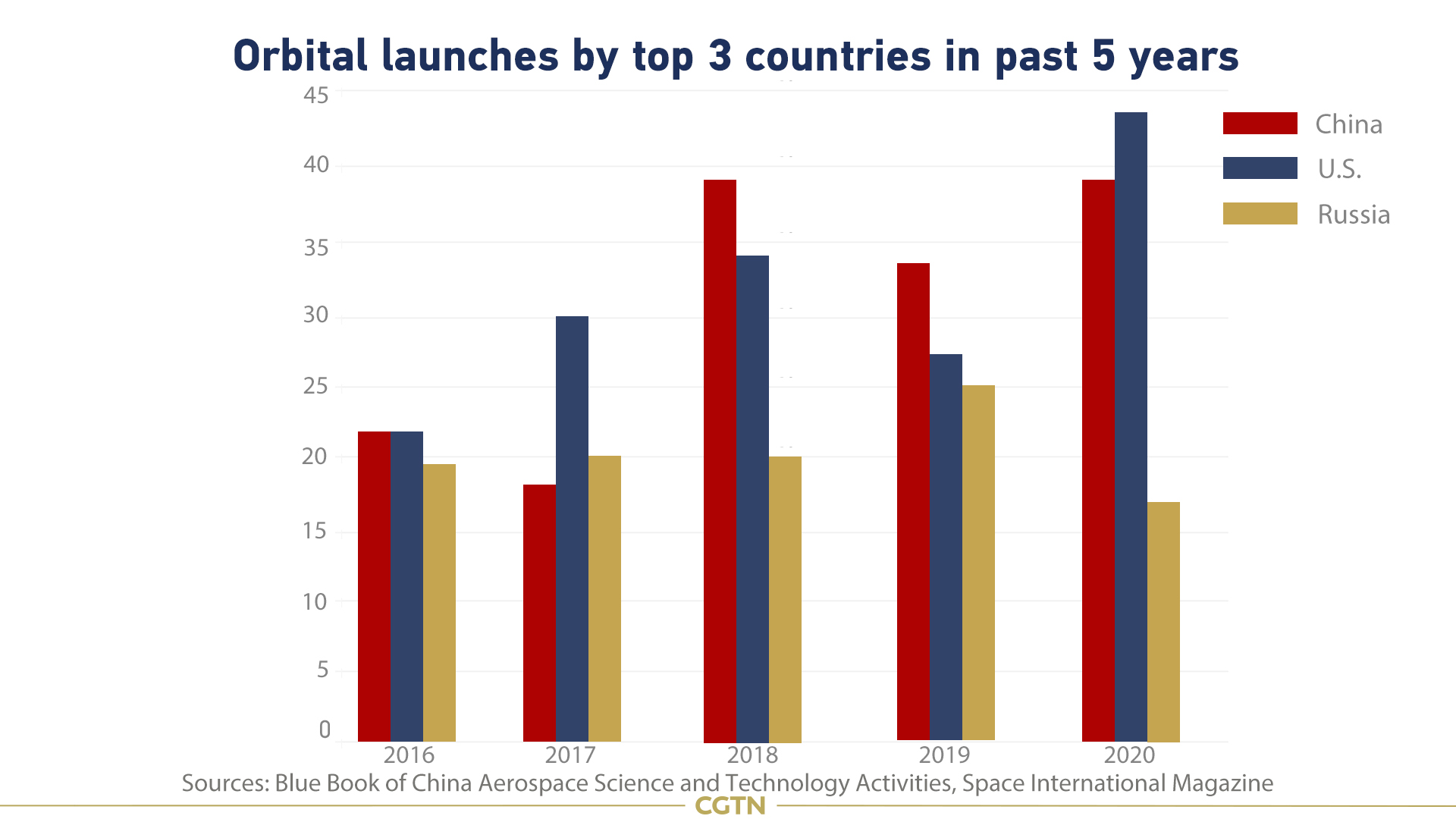
CGTN Infographic by Jia Jieqiong
CGTN Infographic by Jia Jieqiong
The total mass of spacecraft has reached 103.06 tonnes, a 29.3-percent increase compared from 2019. The country ranked second worldwide in total loading and number of launches after the U.S., according to the Blue Book of China Aerospace Science and Technology Activities 2020.
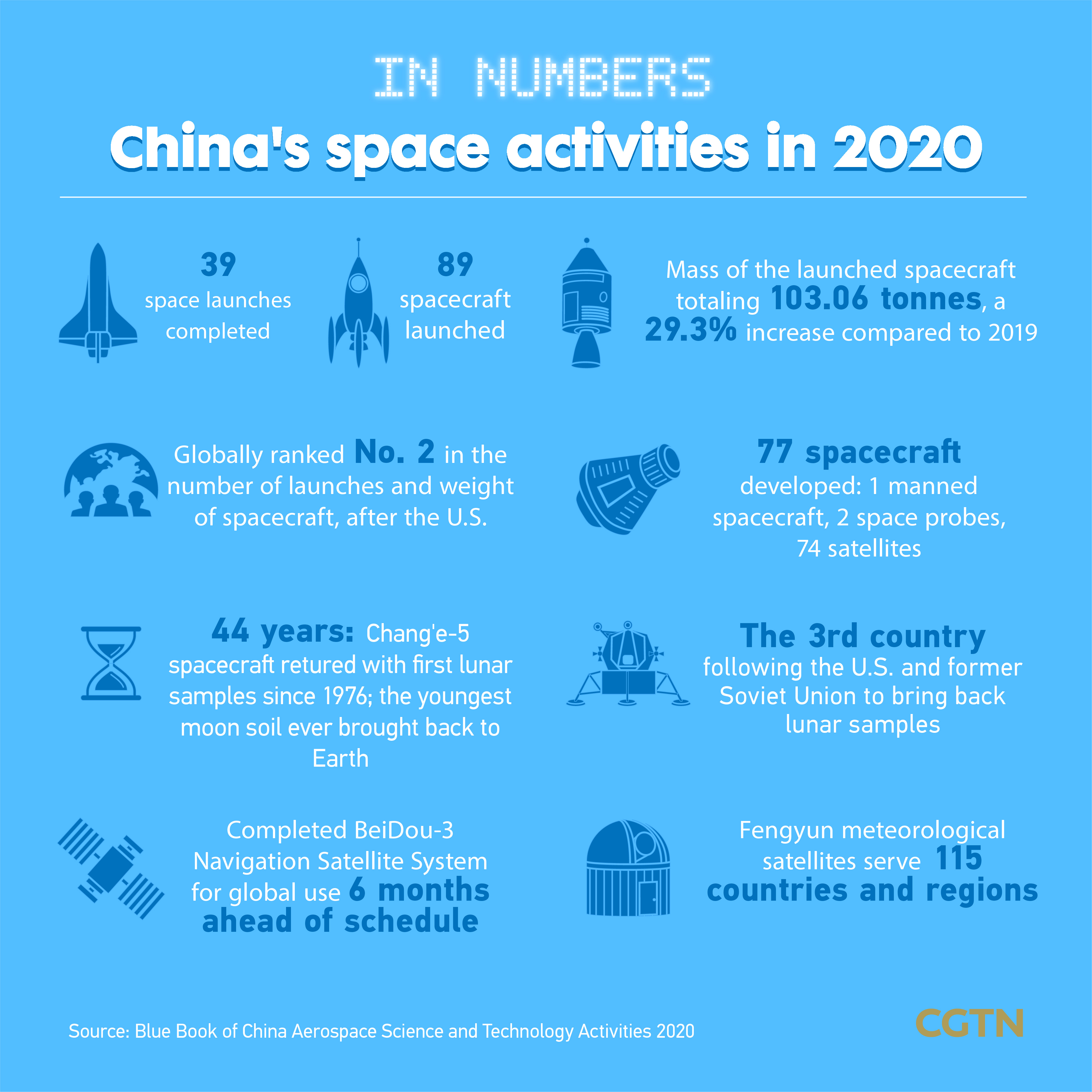
CGTN Infographic by Chen Yuyang
CGTN Infographic by Chen Yuyang
The Long March rocket series now serves as the backbone for China's launch missions, featuring in over 92 percent of the country's total tasks.
The Long March-5 carrier rockets have been put into operation, carrying China's Mars probe and the Chang'e-5 lunar probe.
Launched last May, the Long March-5B rocket, a variant of the Long March-5 series, sent into space a test model of China's new manned spaceship designed for the future space station.
The new medium-lift Long March-8 rocket made its maiden flight last December, ending all rocket launch missions planned under China's 13th Five-Year Plan period (2016-2020).
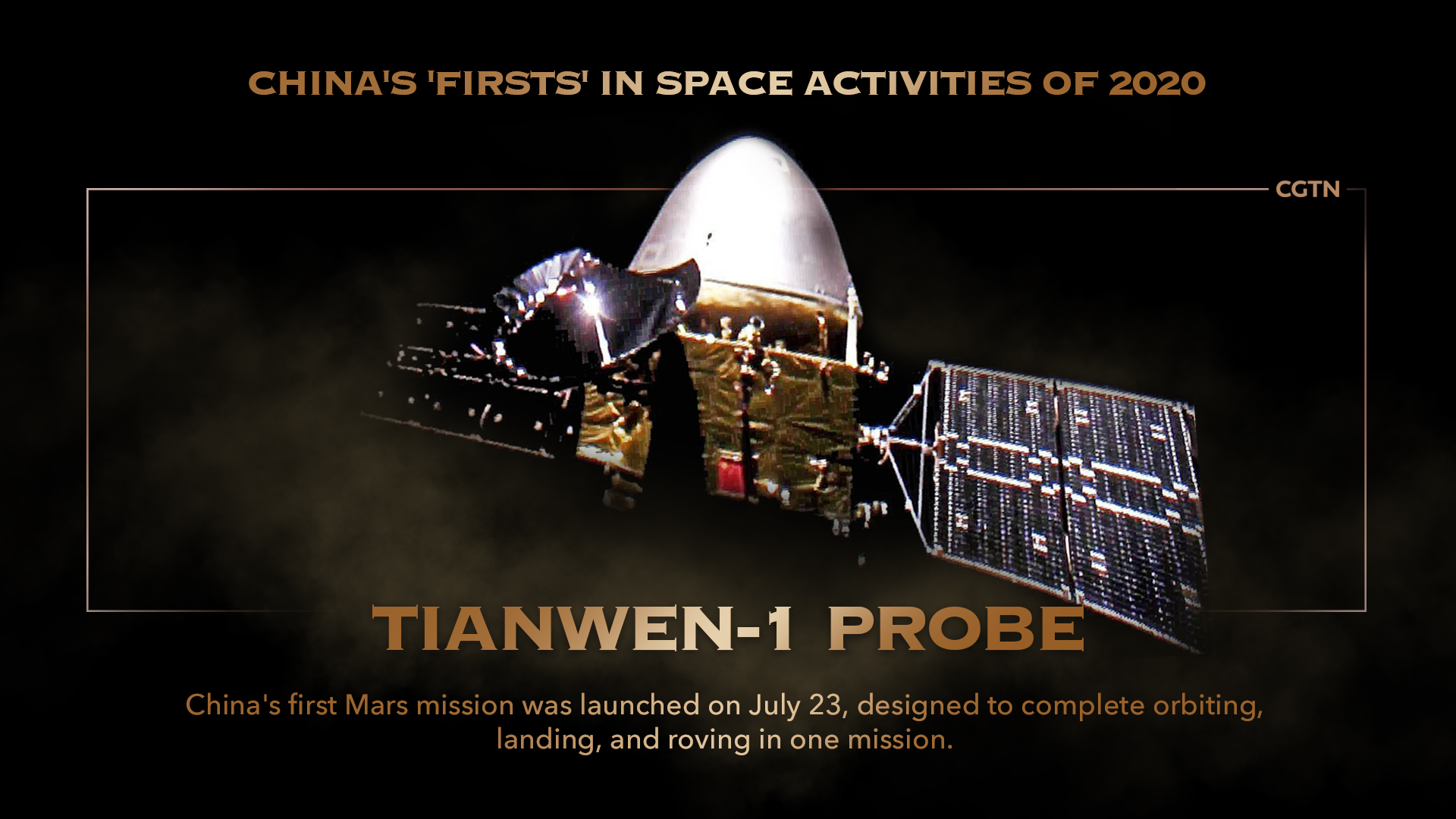
CGTN Infographic by Gao Hongmei
CGTN Infographic by Gao Hongmei
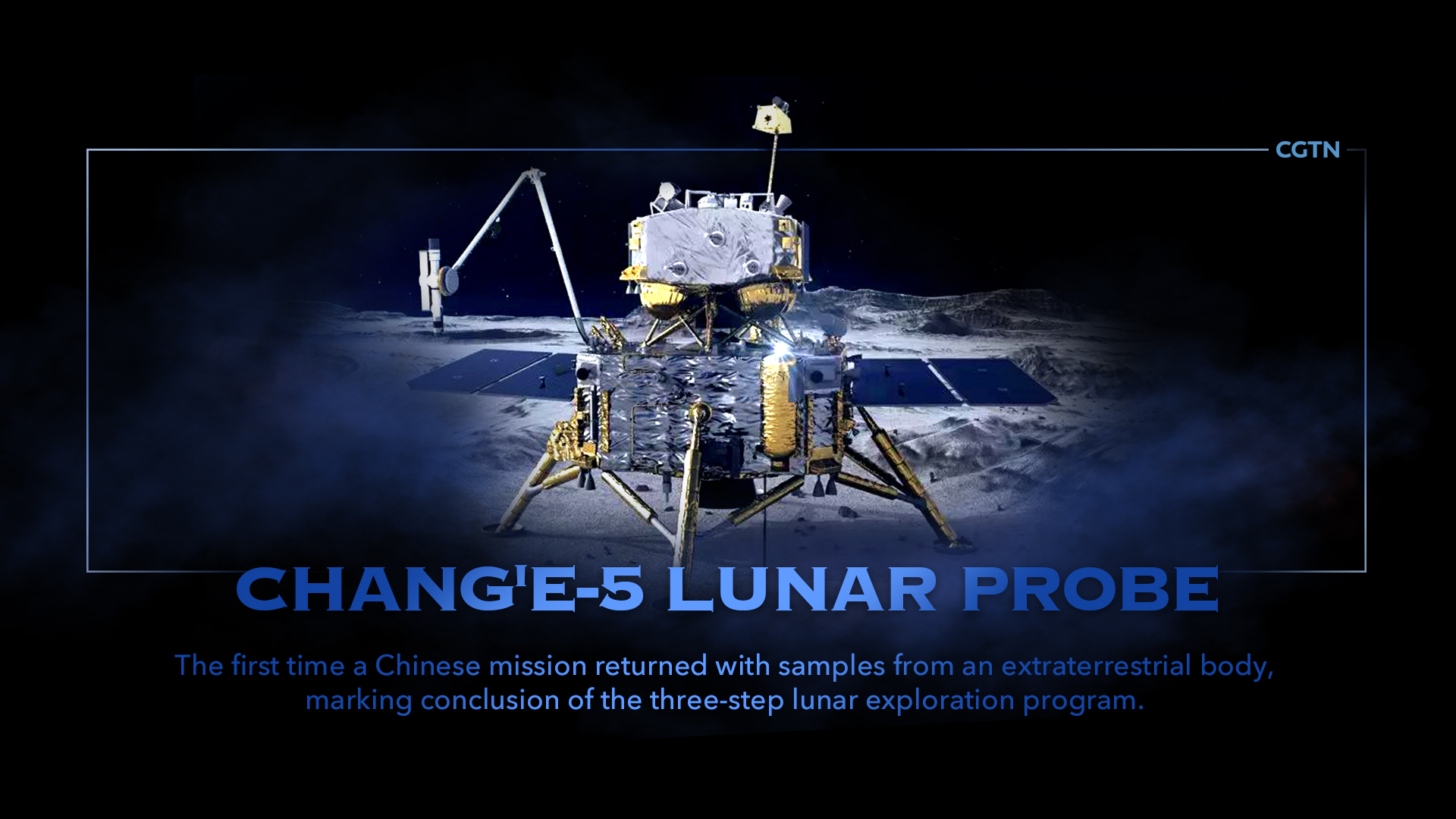
CGTN Infographic by Gao Hongmei
CGTN Infographic by Gao Hongmei
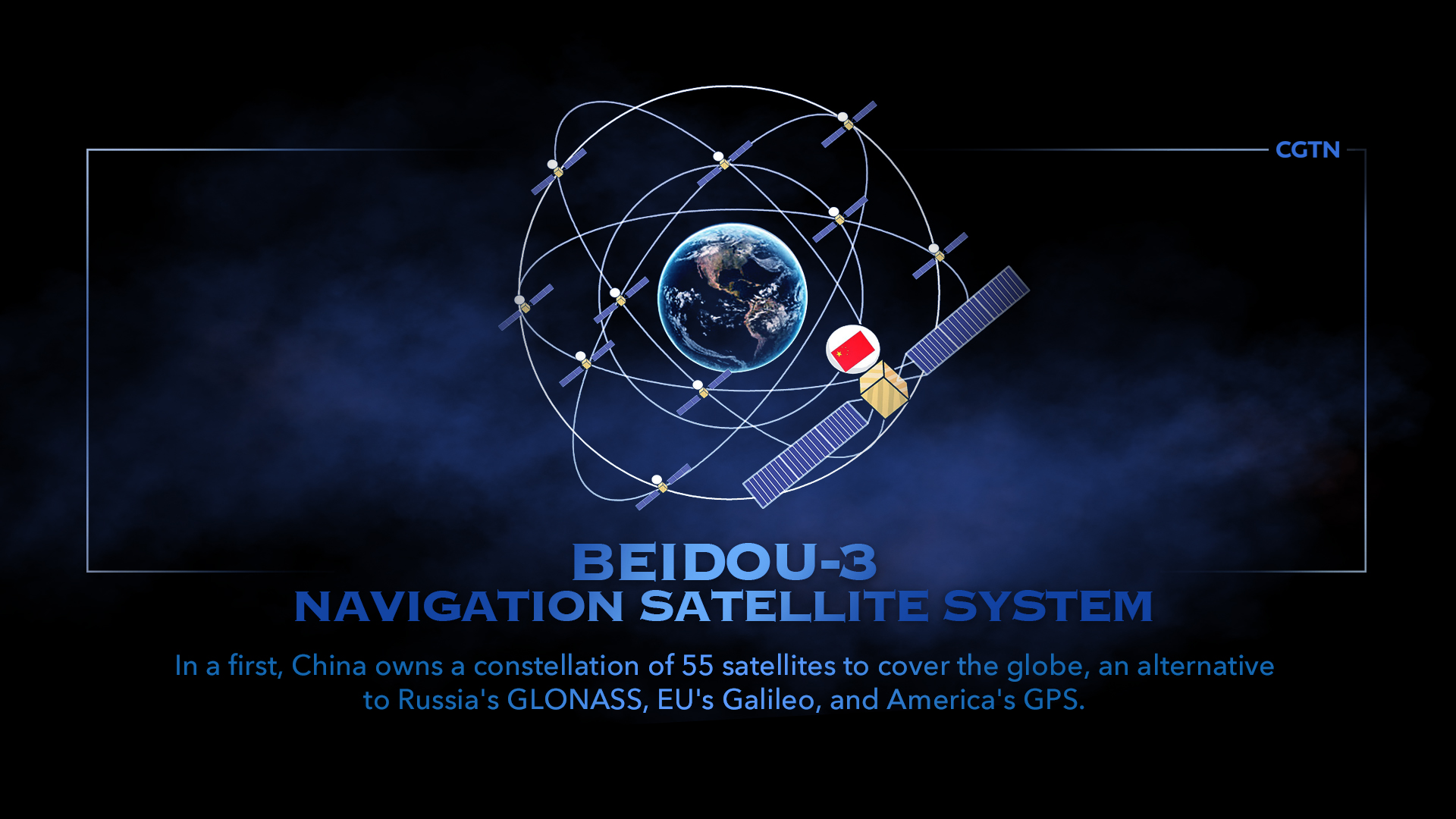
CGTN Infographic by Gao Hongmei
CGTN Infographic by Gao Hongmei

CGTN Infographic by Gao Hongmei
CGTN Infographic by Gao Hongmei

CGTN Infographic by Gao Hongmei
CGTN Infographic by Gao Hongmei
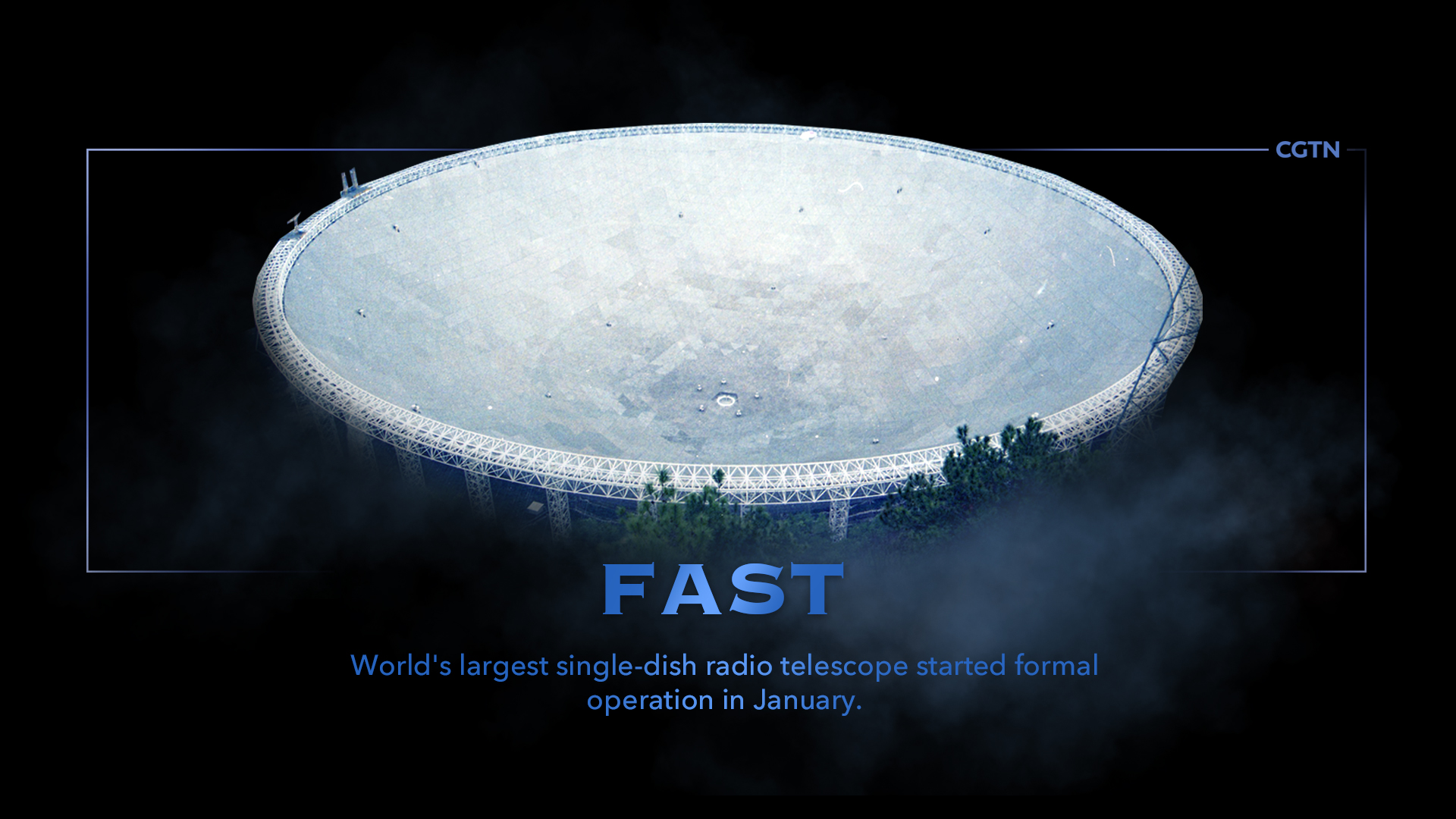
CGTN Infographic by Gao Hongmei
CGTN Infographic by Gao Hongmei
China has achieved a big leap in planetary exploration in the past year.
Chang'e-5 probe returned to Earth with lunar rock and soil samples, the first in more than four decades.
The nation also launched its first Mars mission and expects the probe to complete orbiting, landing and roving in one mission.
In addition, the country launched the last satellite of the BeiDou Navigation Satellite System in June 2020, marking the completion of the country's self-developed BeiDou constellation, one of four global navigation networks alongside the United States' GPS, Russia's GLONASS and the European Union's Galileo.

